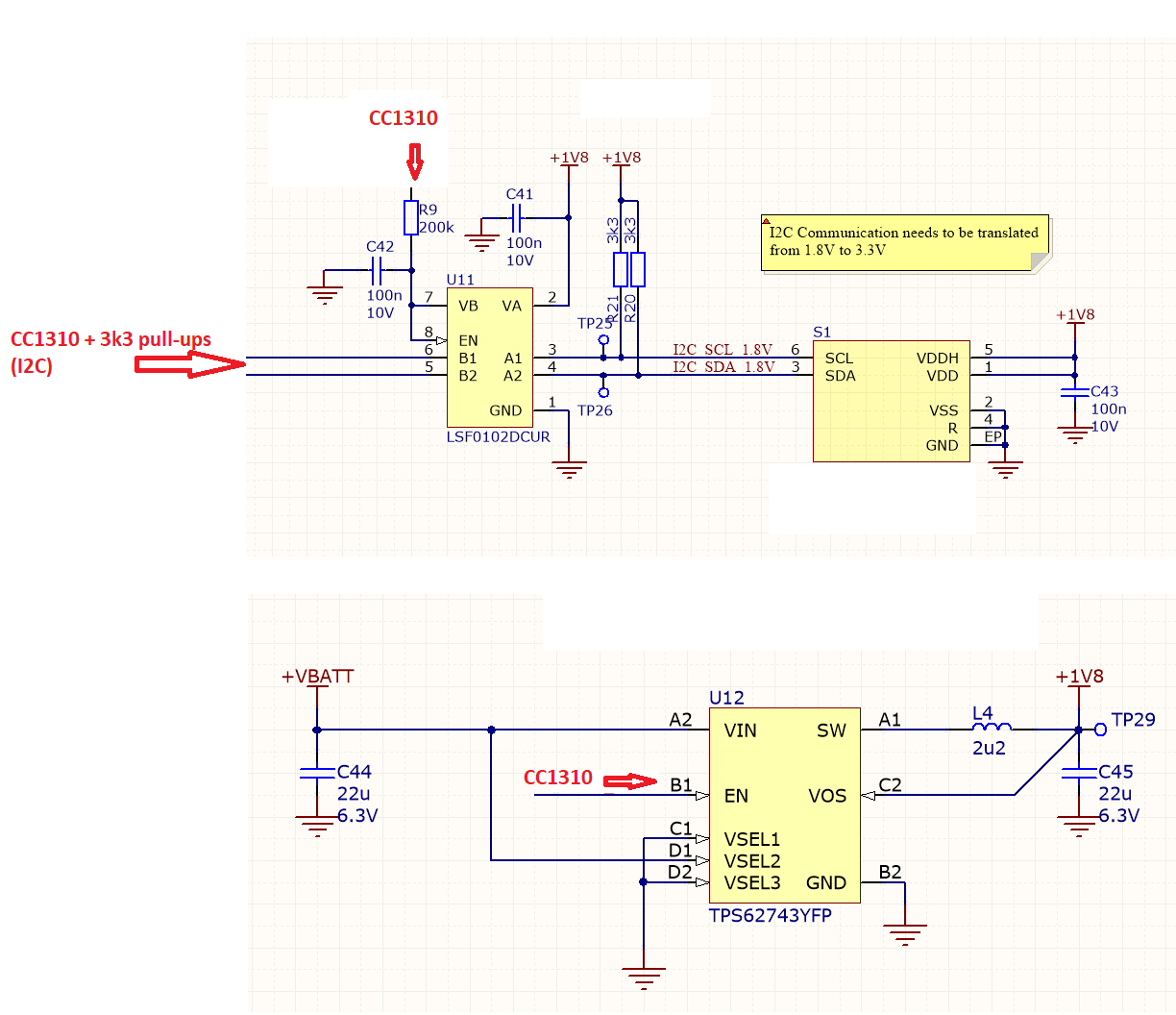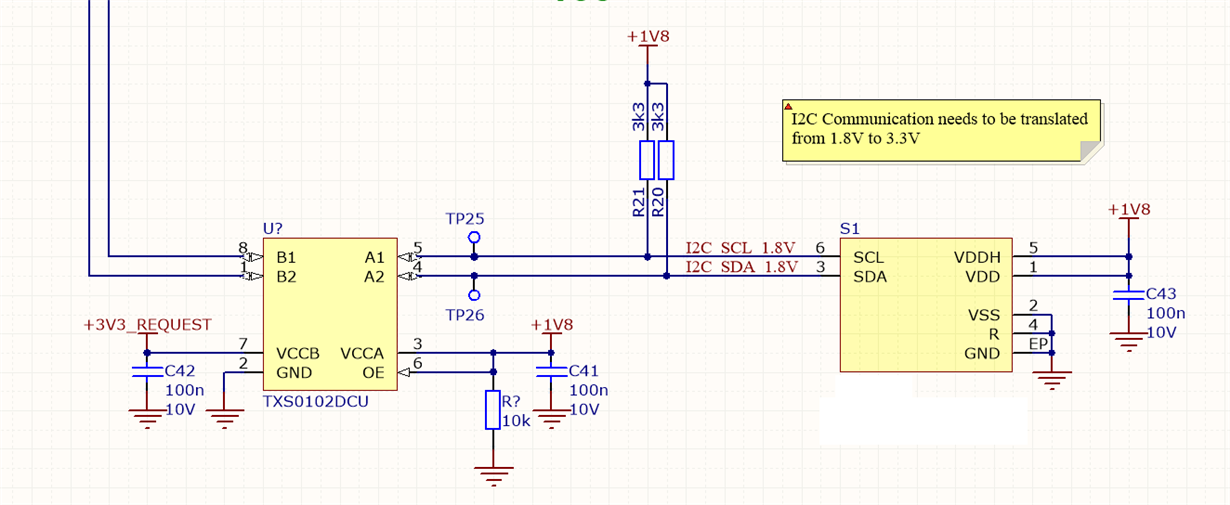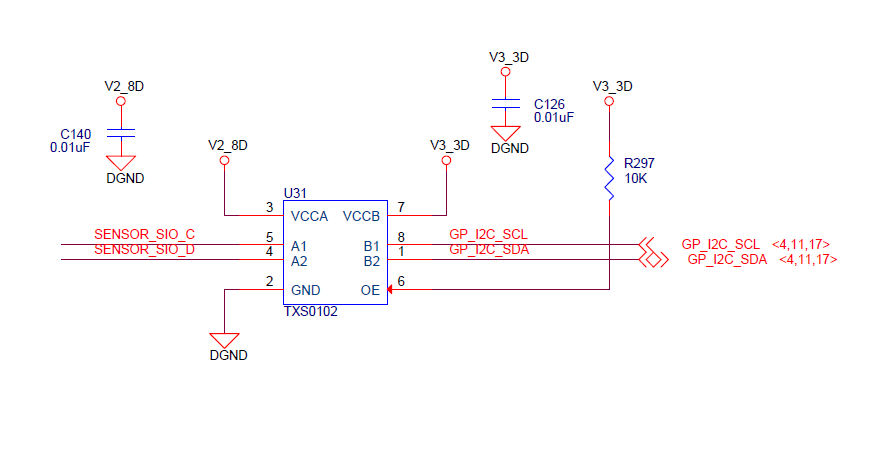Other Parts Discussed in Thread: TPS62743, CC1310, , TXS0102, ATL431
Hello, we are using level translator LSF0102 for i2c from 3.3V (master) to 1.8V (slave). Schematcis bellow, we are using TPS62743 for 1.8V power supply but we are having problem with current flows into from 3.3V to 1.8V and after turn on 2.4V is measured on output of TPS62743. If LSF0102 is unassembled output voltage on TPS62743 is correct. If we use external 1.8V power from linear power source it will handle maitains 1.8V. LSF0102 side B is controled by CC1310 on 3.3V power supply. What should we do to make this setup operationable? Best regards! 



